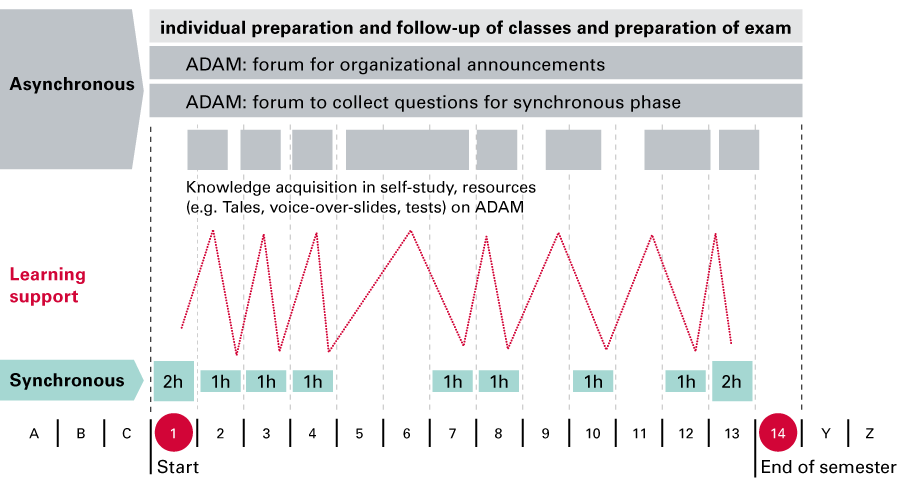INTEGRATIONSKONZEPT
4.6
Example scenario using the flipped classroom format for large-scale lectures
Characterized by: a large group of students (often more than 50), medium to high interactivity
Definition
The flipped classroom format is a special type of blended learning. Flipped classroom (also called “inverted classroom”) is a teaching method where the usual learning activities are, as the name indicates, “flipped” within and outside the lecture hall or classroom. The students independently acquire the content made available digitally by the lecturers. The valuable in-person teaching time at the university itself is used to expand on this content in an interactive manner; e.g. through discussions, joint assignments or group work.1
Integration concept

Realization
- Knowledge transfer (input) or skills acquisition (by the student) is part of the asynchronous, independent learning phase via ADAM using pre-produced videos or recordings (e.g. with Panopto) or Tales (New Media Center service) (see Chapter 6.2).
- The interactive, synchronous classroom teaching sessions are held as groups, with at least one group of those students not present meeting in a virtual learning environment (Zoom). The other group(s) meet in a physical classroom on campus where possible.
- The students are informed of what they should learn during their asynchronous independent study in preparation for the in-person classes (red line: “learning support”; see Chapter 5).
- Pro: The synchronous and asynchronous phases are used in a manner that is didactically meaningful.
- Con: There is a lot of initial work involved in preparing the content for digital distribution. If there are several synchronous groups, the additional time should be taken into account.
1 Source: /www.e-teaching.org, 14 July 2020
